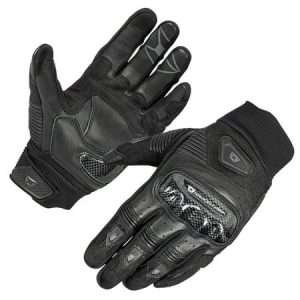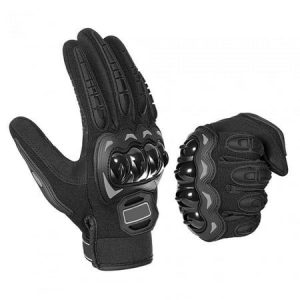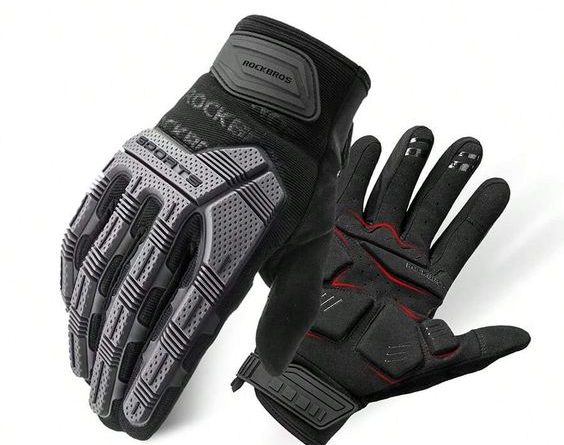Find the Perfect Fit: How to Measure for Motorcycle Gloves
Motorcycle gloves are a crucial piece of safety gear. They protect your hands from abrasions, impacts, and the elements, keeping you comfortable and in control on the road. But ill-fitting gloves can be just as dangerous as no gloves at all. A glove that’s too loose can slip around, reducing dexterity and grip. Conversely, a glove that’s too tight can restrict blood flow, causing discomfort and fatigue.
This guide will walk you through the process of measuring your hands for motorcycle gloves, ensuring a perfect fit for optimal safety and comfort.
Understanding Motorcycle Gloves Sizing
Before diving into measurements, it’s important to understand how motorcycle gloves are typically sized. There are two main sizing systems:

- Hand Circumference: This is the most common method, where the glove size corresponds to the width of your hand around the knuckles.
- Hand Width: Less frequent, but some brands size gloves based on the width across your palm, excluding the thumb.
The manufacturer’s size chart will specify which system they use. It’s important to consult the specific size chart for the gloves you’re interested in, as sizing can vary slightly between brands.
Gathering Your Tools
Measuring your hands for motorcycle gloves is a simple process that requires minimal tools:
- Soft Measuring Tape: A fabric tape measure is ideal for conforming to the curves of your hand. You can find one at any sewing store or online retailer.
- Pen and Paper (Optional): If you’re measuring both hands, jotting down the measurements can help you compare them later.
If you don’t have a measuring tape, you can use a piece of string or ribbon. Wrap it around your hand, mark the spot where it meets, and then lay it flat against a ruler to measure the distance.
Taking Your Measurements
Now that you have your tools ready, let’s get down to measuring!

- Dominant Hand: Most people have a slight size difference between their hands. Measure your dominant hand first, as this will likely be the size you choose for the gloves.
- Make a Fist: Gently close your hand into a loose fist, mimicking your grip on a motorcycle handlebar. This ensures the measurement reflects the natural position your hand will be in while riding.
- Wrap and Measure: Hold the measuring tape flat against your palm. Wrap the tape snugly around your hand, just below the knuckles, excluding your thumb. Don’t pull the tape too tight; you want a comfortable fit.
- Read the Measurement: Note down the measurement in inches or centimeters, depending on the marking on your tape measure.
- Repeat for Non-Dominant Hand (Optional): If there’s a significant size difference between your hands, measure your non-dominant hand as well. You may need to choose a slightly larger size to accommodate both hands comfortably.
Using the Size Chart
Once you have your hand measurements, consult the size chart for the specific motorcycle gloves you’re considering. The chart will typically list the measurement range (in inches or centimeters) for each size offered by the manufacturer.
Here are some tips for using the size chart:

- Match Your Measurement: Find the size range on the chart that corresponds to your hand measurement.
- In Between Sizes: If your measurement falls between two sizes, it’s generally recommended to size up for motorcycle gloves. A slightly larger glove is easier to adjust for comfort compared to a tight-fitting one.
- Consider Material: Leather gloves tend to stretch slightly over time, so you might be able to get away with a snugger fit for this material. However, textile gloves typically don’t stretch much, so prioritize a comfortable fit from the start.
- Brand Reviews: Reading online reviews from other customers can also be helpful. See if they mention the gloves running true to size or recommend sizing up or down.
Additional Considerations for Perfect Fit
While hand measurement is the primary factor, here are some additional things to keep in mind for achieving a perfect fit with your motorcycle gloves:
- Finger Length: Make sure your fingers comfortably reach the fingertips of the gloves. Gloves that are too short can restrict movement and dexterity. Conversely, excessively long fingers can bunch up and compromise feel on the controls.
- Wrist Closure: The wrist closure should be snug but not constricting. It should allow for easy on and off while keeping the glove securely in place while riding.
- Try Before You Buy (Ideally): Whenever possible, try on the gloves before purchasing them. This allows you to assess the overall fit, finger length, and comfort level.
The Importance of a Perfect Fit: Safety and Comfort
Finding the right balance between safety and comfort is paramount when it comes to motorcycle gloves. Here’s how a perfect fit contributes to both:

- Enhanced Dexterity and Control: A glove that fits snugly but not tightly allows for maximum freedom of movement in your fingers and wrist. This translates to better grip on the handlebars and levers, giving you more precise control over your motorcycle.
- Reduced Fatigue: Ill-fitting gloves can cause unnecessary strain and fatigue in your hands. A glove that fits well conforms to the natural shape of your hand, minimizing muscle tension and discomfort on long rides.
- Improved Protection: A properly fitting glove stays securely in place during a crash or slide, offering optimal protection for your hands from abrasions and impacts. Loose gloves can easily slip off, leaving your hands vulnerable.
- Better Feel and Feedback: A snug fit allows for a more natural feel of the controls and the road. You’ll be able to sense subtle changes in grip and feedback more readily, enhancing your overall riding experience.
By ensuring a perfect fit, you’re maximizing the effectiveness of your motorcycle gloves in keeping you safe and comfortable on the road.
Beyond Measurement: Motorcycle Gloves Features to Consider
While proper measurement is crucial, there are other features of motorcycle gloves that can influence fit and comfort:

- Pre-Curved Fingers: Many motorcycle gloves come with pre-curved fingers that mimic the natural curve of your hand when gripping handlebars. This can significantly improve comfort and reduce hand fatigue.
- Articulated Knuckles: Look for gloves with articulated knuckles that allow for greater flexibility and range of motion. This is particularly important for activities like braking and clutching.
- Wrist Closure Options: Velcro straps, zippers, and gauntlet closures all offer varying levels of adjustability. Choose a closure system that allows for a secure and comfortable fit on your wrist.
- Touchscreen Compatibility: If you rely on your smartphone or GPS while riding, consider gloves with touchscreen compatible fingertips. This allows you to operate your devices without removing your gloves.
By taking these features into consideration alongside proper measurement, you can narrow down your choices and find a pair of motorcycle gloves that offer the perfect blend of fit, protection, and functionality for your riding needs.
